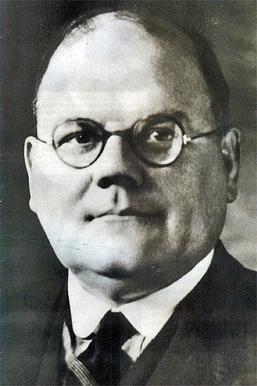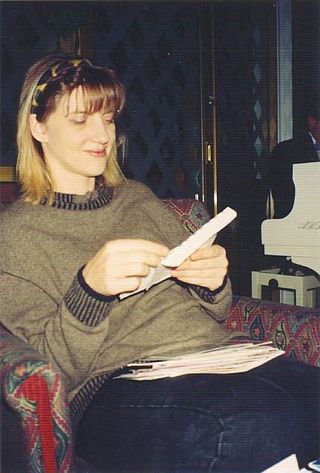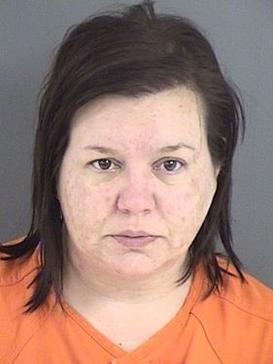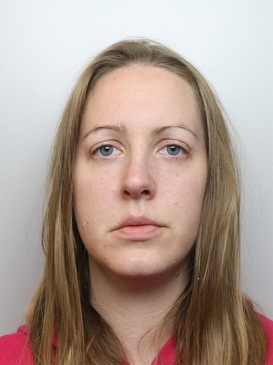Related Research Articles

Claus von Bülow was a Danish-born British lawyer, consultant and socialite. In 1982, he was convicted of both the attempted murder of his wife Sunny von Bülow in 1979, which had left her in a temporary coma, as well as an alleged insulin overdose in 1980 that left her in a persistent vegetative state for the rest of her life. On appeal, both convictions were reversed, and Bülow was found not guilty at his second trial.

St James's University Hospital is in Leeds, West Yorkshire, England and is popularly known as Jimmy's. It is one of the United Kingdom's most famous hospitals due to its coverage on television. It is managed by the Leeds Teaching Hospitals NHS Trust.

John Bodkin Adams was a British general practitioner, convicted fraudster, and suspected serial killer. Between 1946 and 1956, 163 of his patients died while in comas, which was deemed to be worthy of investigation. In addition, 132 out of 310 patients had left Adams money or items in their wills.

Charles Edmund Cullen is an American serial killer. Cullen, a nurse, murdered dozens—possibly hundreds—of patients during a 16-year career spanning several New Jersey medical centers until being arrested in 2003. He confessed to committing as many as 40 murders at least 29 of which have been confirmed; though interviews with police, psychiatrists and journalists suggest he committed many more. Researchers who are intimately involved in the case believe Cullen may have murdered as many as 400 people. However, most murders cannot be confirmed due to lack of records.

Kristen Heather Gilbert is an American serial killer and former nurse who was convicted of four murders and two attempted murders of patients admitted to the Veterans Affairs Medical Center (VAMC) in Northampton, Massachusetts. She induced cardiac arrest in patients by injecting their intravenous therapy bags with lethal doses of epinephrine, commonly known as adrenaline, which is an untraceable heart stimulant. She would then respond to the coded emergency, often resuscitating the patients herself. Prosecutors said Gilbert was on duty for about half of the 350 deaths that occurred at the hospital from when she started working there in 1989, and that the odds of this merely being a coincidence was 1 in 100 million. However, her only confirmed victims were Stanley Jagodowski, Henry Hudon, Kenneth Cutting, and Edward Skwira.

Insulin shock therapy or insulin coma therapy was a form of psychiatric treatment in which patients were repeatedly injected with large doses of insulin in order to produce daily comas over several weeks. It was introduced in 1927 by Austrian-American psychiatrist Manfred Sakel and used extensively in the 1940s and 1950s, mainly for schizophrenia, before falling out of favour and being replaced by neuroleptic drugs in the 1960s.
Ian MacDonald Robertson, Lord Robertson was a Scottish High Court of Justiciary judge who contributed greatly to Scots law.
Beverley Gail Allitt is an English serial killer who was convicted of murdering four infants, attempting to murder three others, and causing grievous bodily harm to a further six at Grantham and Kesteven Hospital, Lincolnshire between February and April 1991. She committed the murders as a State Enrolled Nurse on the hospital's children's ward.

Benjamin Geen is a British repeat murderer and former nurse who was convicted of killing two of his own patients and committing grievous bodily harm against 15 others while working at Horton General Hospital in Banbury, Oxfordshire in 2003 and 2004. Geen, who was believed to be motivated by his 'thrill-seeking' temperament, injected a number of patients with dangerous drugs in order to cause respiratory arrest so he could enjoy the 'thrill' of resuscitating them. He was apprehended after staff at the hospital noticed that it was always when he treated patients, most of whom only had minor injuries such as dislocated shoulders, that they inexplicably had respiratory failures. Upon his arrest, a syringe full of some of the drugs he used to attack patients was found on his person. When he saw officers approaching, he discharged the syringe contents into his jacket pocket in an attempt to hide the fact he had removed potentially lethal drugs from the hospital without authority. He was found guilty at trial in 2006 and sentenced to a minimum of 30 years imprisonment. All but one of the guilty verdicts against him were by unanimous jury decision.

The Lucia de Berk case was a miscarriage of justice in the Netherlands concerning the wrongful conviction for murder of a Dutch licensed paediatric nurse. In 2003, Lucia de Berk was sentenced to life imprisonment, for which no parole is possible under Dutch law, for four murders and three attempted murders of patients under her care. In 2004, after an appeal, she was convicted of seven murders and three attempted murders.
Edith Alice Morrell was a resident of Eastbourne, East Sussex, England, and patient of Dr John Bodkin Adams. Although Adams was acquitted in 1957 of her murder, the question of Adams' role in Morrell's death excited considerable interest at the time and continues to do so. This is partly because of negative pre-trial publicity which remains in the public record, partly because of the several dramatic incidents in the trial and partly as Adams declined to give evidence in his own defence. The trial featured in headlines around the world and was described at the time as "one of the greatest murder trials of all time" and "murder trial of the century". It was also described by the trial judge as unique because "the act of murder" had "to be proved by expert evidence." The trial also established the legal doctrine of double effect, where a doctor giving treatment with the aim of relieving pain may, as an unintentional result, shorten life.
An angel of mercy or angel of death is a type of criminal offender who is usually employed as a medical practitioner or a caregiver and intentionally harms or kills people under their care. The angel of mercy is often in a position of power and may decide the victim would be better off if they no longer suffered from whatever severe illness is plaguing them. This person then uses their knowledge to kill the victim. In some cases, as time goes on, this behavior escalates to encompass the healthy and the easily treated.

Colin Campbell Norris is a Scottish serial killer and former nurse convicted for the murder of four elderly patients and attempted to murder another in two hospitals in Leeds, England in 2002.

In 2011, deaths occurred at Stepping Hill Hospital in Stockport, Greater Manchester, England. After suspicions were raised concerning the similarities of the deaths, a murder inquiry was launched. Nurse Victorino Chua was found to have poisoned several patients with insulin. He was convicted of murder in 2015 and sentenced to life imprisonment.

Kimberly Clark Saenz, also known as Kimberly Clark Fowler, is a former licensed practical nurse and a convicted serial killer. She was convicted of killing several patients at a Texas dialysis center by injecting bleach into their dialysis lines.

Ruchill Hospital was a fever hospital in the Ruchill area of Glasgow, Scotland. The hospital was closed in 1998 and was sold to Scottish Enterprise in July 1999. It was managed by NHS Greater Glasgow.
Elizabeth Tracy Mae "Bethe" Wettlaufer is a convicted Canadian serial killer and former registered nurse who confessed to murdering eight senior citizens and attempting to murder six others in southwestern Ontario between 2007 and 2016. With a total of 14 victims either killed or injured by her actions, she is described as one of the worst serial killers in Canadian history.

Lucy Letby is a British former neonatal nurse who murdered seven infants and attempted to murder six others between June 2015 and June 2016. Letby was the focus of suspicion following a high number of infant deaths at the neonatal unit of the Countess of Chester Hospital, shortly after she was qualified to work with children in the hospital's intensive care unit, and owing to her being on duty whenever suspicious incidents took place.
Reta Phyllis Mays is an American convicted serial killer who murdered at least seven elderly military veterans over a span of eleven months, between July 2017 and June 2018, by injecting them with lethal doses of insulin while she was employed as a nursing assistant at the Louis A. Johnson Veterans Medical Center, in Clarksburg, West Virginia. On May 11, 2021, Mays was sentenced to seven consecutive life sentences for the murders, plus 20 years for one count of assault with intent to commit murder.
Vincent Marks was an English pathologist and clinical biochemist known for his works on studying insulin and hypoglycemia. His contributions to medical science include simplifying low blood glucose testing, introducing insulin radioimmunoassay, and advancing diabetes research. Marks played an important role in high-profile medico-legal cases, notably providing expert testimony that helped acquit Danish-born British socialite Claus von Bülow in 1985, a case that was the basis of the Oscar-winning movie Reversal of Fortune (1990).
References
- ↑ "Gentle nurse became killer". Western Daily Press. 8 October 1974. Retrieved 18 April 2023.
- 1 2 3 4 Brown, Craig (4 March 2008). "The hatred that turned Colin Norris into serial killer". The Scotsman. Edinburgh.
- 1 2 3 4 5 6 Lucy, David; Aitkin, Colin (2002). "A review of the role of roster data and evidence of attendance and cases of suspected excess deaths in a medical context". Law, Probability and Risk. 1 (2). The University of Edinburgh: 142. doi: 10.1093/lpr/1.2.141 .
- 1 2 3 4 5 Daily Record [ dead link ]
- ↑ "Colin Norris: From student to deadly abuser". The Telegraph. 11 May 2008. Archived from the original on 11 May 2008. Retrieved 19 June 2022.
- 1 2 3 "Nurse who inspired Colin Norris - Telegraph". The Telegraph. 11 May 2008. Archived from the original on 11 May 2008. Retrieved 19 June 2022.
- ↑ Beatrice Crofts Yorker, Kenneth W. Kizer, Paula Lampe, A.R.W. Forrest, Jacquetta M. Lannan, Donna A. Russell: Serial Murder by Healthcare Professionals, Journal of Forensic Sciences 51 (6), pp1362–1371 (2006)
- 1 2 3 4 "Did Sister Jessie's story influence carer who used insulin to kill?". Herald Scotland. 4 March 2008. Retrieved 16 June 2021.
- 1 2 Lucy, David; Aitkin, Colin (2002). "A review of the role of roster data and evidence of attendance and cases of suspected excess deaths in a medical context". Law, Probability and Risk. 1 (2). The University of Edinburgh: 143. doi: 10.1093/lpr/1.2.141 .
- ↑ Fisher, Barry A. J.; William J. Tilstone; Catherine Woytowicz (2009). Introduction to Criminalistics: The Foundation of Forensic Science. Academic Press. p. 229. ISBN 978-0-12-088591-6.
- ↑ Lucy, D.; Aitken, C. (2002). "A review of the role of roster data and evidence of attendance in cases of suspected excess deaths in a medical context". Law, Probability and Risk. 1 (2): 141. doi: 10.1093/lpr/1.2.141 .
- ↑ Brownlie, A. (1978). "A Lawyer Looks at Forensic Science: the Expert in Court". Journal of the Forensic Science Society. 18 (1–2): 5–18. doi:10.1016/S0015-7368(78)71176-X. PMID 739248.